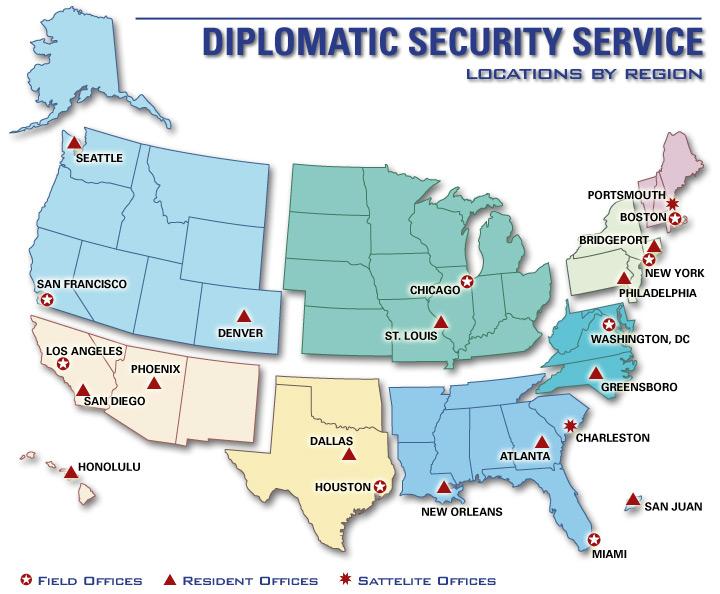Inside the United States Secret Service Field Offices: Guardians of National Security and Financial Integrity
Regional Field Offices: Cornerstones of National Protection and Crime Prevention
The United States Secret Service operates an extensive network of field offices strategically dispersed throughout the country, forming the backbone of its mission to protect national leaders and uphold the integrity of the financial system. These regional hubs empower the agency to respond swiftly to threats, conduct thorough investigations, and collaborate closely with local law enforcement agencies. By positioning agents within diverse jurisdictions, the Secret Service enhances its intelligence capabilities and tailors its operations to address the specific security challenges unique to each region.
Primary responsibilities of these field offices encompass:
- Investigating complex financial crimes and emerging cyber threats
- Providing protective services for government officials and visiting dignitaries within their territories
- Coordinating efforts to combat counterfeiting, fraud, and identity theft
- Delivering training programs and resources to strengthen local law enforcement and community resilience
| Field Office Location | Core Focus Areas | Geographic Jurisdiction |
|---|---|---|
| Chicago | Financial Fraud & Cybersecurity | Midwest Region |
| Atlanta | Protective Services & Criminal Investigations | Southeastern U.S. |
| Seattle | Counterfeit Currency & Cybercrime | Pacific Northwest |
Operational Excellence and Community Collaboration in Field Office Missions
Secret Service field offices balance sophisticated operational tactics with proactive community engagement to fulfill their dual mandate of protection and law enforcement. Agents employ a blend of advanced investigative methodologies and cutting-edge technology to detect and neutralize threats before they escalate. This approach is complemented by a strong emphasis on building trust and cooperation within the communities they serve.
Key community-focused initiatives include:
- Strategic partnerships: Working alongside local police departments, federal agencies, and private sector partners to enhance intelligence sharing and joint operations.
- Public education campaigns: Raising awareness about cybercrime, identity theft, and financial fraud through workshops and informational sessions.
- Youth engagement programs: Hosting interactive sessions aimed at educating young people about security awareness and fostering long-term community support.
| Operational Area | Community Engagement Activity |
|---|---|
| Detection of counterfeit money | Retailer training seminars |
| Protective logistics planning | Collaboration with neighborhood watch groups |
| Cybercrime investigations | Virtual safety workshops for the public |
Innovative Approaches and Challenges in Securing High-Profile National Events
Securing major events such as presidential inaugurations, international summits, and national conventions requires a sophisticated, multi-layered security strategy. The Secret Service integrates state-of-the-art technology with expert field operations to address the dynamic threat landscape. One of the primary challenges is orchestrating seamless collaboration among numerous agencies within tight timeframes, ensuring that communication and response efforts are flawless.
In response to these challenges, the agency has introduced several groundbreaking tools and methods:
- Mobile Sensor Arrays: Rapidly deployable units that establish secure perimeters and monitor for suspicious activity.
- Artificial Intelligence Risk Analysis: Advanced algorithms that analyze behavioral patterns to forecast potential security threats.
- Unified Crisis Coordination Systems: Platforms that facilitate real-time communication and decision-making among federal, state, and local partners.
- Immersive Training Environments: High-fidelity simulators that prepare agents for a variety of complex scenarios, enhancing readiness and response efficiency.
| Technology | Function | Benefit |
|---|---|---|
| Mobile Sensor Arrays | Perimeter defense | Quick deployment with extensive coverage |
| AI Risk Analysis | Threat forecasting | Proactive identification of risks |
| Crisis Coordination Systems | Interagency communication | Enhanced operational synchronization |
| Immersive Training | Agent preparedness | Faster and more effective responses |
Enhancing Interagency Cooperation and Optimizing Resource Deployment
To maximize the effectiveness of national security efforts, fostering robust interagency collaboration is essential. This can be achieved through establishing dedicated task forces with rotating leadership to build trust and accountability. Regular joint exercises and cross-training initiatives help personnel understand each agency’s protocols, promoting smoother coordination during critical operations. Additionally, investing in interoperable communication and data-sharing platforms breaks down information silos, enabling real-time intelligence exchange vital for mission success.
Effective resource management is equally important. Implementing a centralized system to monitor and allocate assets across field offices ensures that personnel and equipment are deployed efficiently based on evolving priorities. Uniform guidelines for prioritizing resources help balance urgent threat responses with ongoing protective responsibilities. The following framework illustrates a strategic approach to resource allocation:
| Priority Tier | Focus Area | Resource Allocation |
|---|---|---|
| Critical | Threat Neutralization | Specialized personnel, advanced surveillance gear |
| Moderate | Protective Intelligence Gathering | Analytical software, secure communication tools |
| Routine | Administrative and Training Support | Shared office spaces, educational materials |
Conclusion: The Vital Role of Secret Service Field Offices in National Security
In conclusion, the United States Secret Service’s field offices are indispensable to the agency’s overarching mission of protecting the nation’s leaders and financial systems. Their strategic placement across the country ensures rapid threat response and fosters essential partnerships with local communities and law enforcement. As security challenges continue to evolve, the adaptability and innovation demonstrated by these field offices remain critical to safeguarding the United States against both physical and cyber threats.







